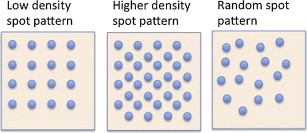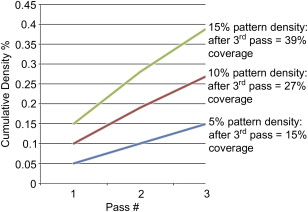This article deals with the technical characteristics of fractional light devices, fractional lasers, and light sources that cause their biologic effects by increasing the temperature of the target tissues to the point where the target is either killed, or in other cases where the temperature of the target tissue is increased to the point where repair and remodeling systems are turned on but tissue is not killed. Resurfacing devices act by causing ablation and/or coagulation.
This article deals with the technical characteristics of fractional light devices, fractional lasers, and light sources that cause their biologic effects by increasing the temperature of the target tissues to the point where the target is either killed (for example, where the target is a hair follicle or the lining of a blood vessel), or in other cases where the temperature of the target tissue is increased to the point where repair and remodeling systems are turned on but tissue is not killed.
Resurfacing devices act by causing ablation and/or coagulation. Coagulation produces a complex set of tissue effects, depending on the combination of temperature to which tissue is raised and duration of temperature rise. At one extreme, coagulation causes apoptosis and cell death; at the milder end of the spectrum, tissue exposed to lower energy (for example, because it is further away from the beam) may only be heated up to the extent that the tissue is injured but not destroyed, turning on repair and remodeling systems that contribute to the aesthetic benefits which the patient is seeking.
The light emitted by optical therapeutic devices can be either a single pure wavelength—generally produced by a laser—or a part of the visible and infrared spectrum (eg, produced by intense pulsed light [IPL] from a filtered flash lamp or light-emitting diodes [LED]). The energy is generally administered in pulses ranging in duration from milliseconds to seconds, and each pulse can range in shape from a square wave to a series of subpulses, depending on system design considerations and cost/performance trade-offs. The spot size can range from perhaps 100 microns in some fractionated ablative devices to several square centimeters in the case of many intense pulsed light devices.
The choice of technologies used in optical therapeutic devices depends to a great extent on what is most cost effective. There is no magic in “lasers,” and over the years non-laser light sources have become increasingly effective—and cost-effective. In general, laser light is more expensive to produce and control, but has the advantage of allowing a much higher degree of precision when specifying the parameters shown in Box 1 .
- 1.
Wavelength
- 2.
Spot size
- 3.
Spot pattern ( Fig. 1 )
- a.
Grid versus random pattern
- a.
- 4.
Density of spots: percent coverage of the treated area ( Fig. 2 )
- 5.
Sequential adjacent versus nonsequential nonadjacent placement of spots, to minimize thermal load (bulk heating) on nontreated skin between spots ( Fig. 3 )
- 6.
Pulse duration
- 7.
Fluence
- 8.
Degree of beam collimation
- 9.
Beam homogeneity
- a.
For example, top hat versus Gaussian energy distribution
- a.
- 10.
Pulse characteristics
- a.
Ranging from a simple square wave to a train of subpulses, the duration of which may be modulated to optimize the balance between ablation and coagulation; this is most commonly done with Er-YAG systems.
- a.
Precise control of the above parameters is valuable only up to a point; beyond that, extra precision adds cost without adding value.



The laser wavelengths and IPL/LED spectra used in these devices are chosen with careful attention to the degree to which they transfer energy to the intended chromophore, and taking into account the depth of the target and the depth to which the proposed wavelength or spectrum is capable of penetrating. The depth of penetration of a wavelength or spectrum is influenced by the degree to which it is absorbed (and scattered) by water and other tissue components ( Fig. 4 ), and is also influenced by spot size ( Fig. 5 ). The final effect of a given wavelength on target and nontarget tissue is strongly influenced by the factors listed in Box 1 .










